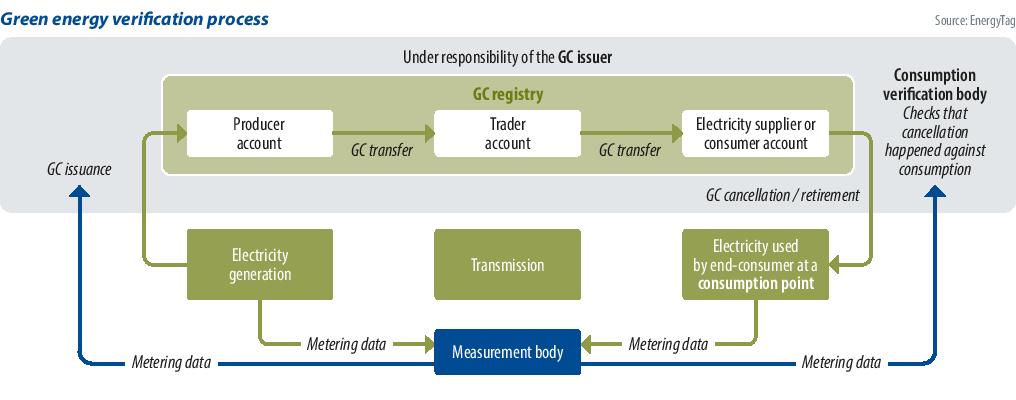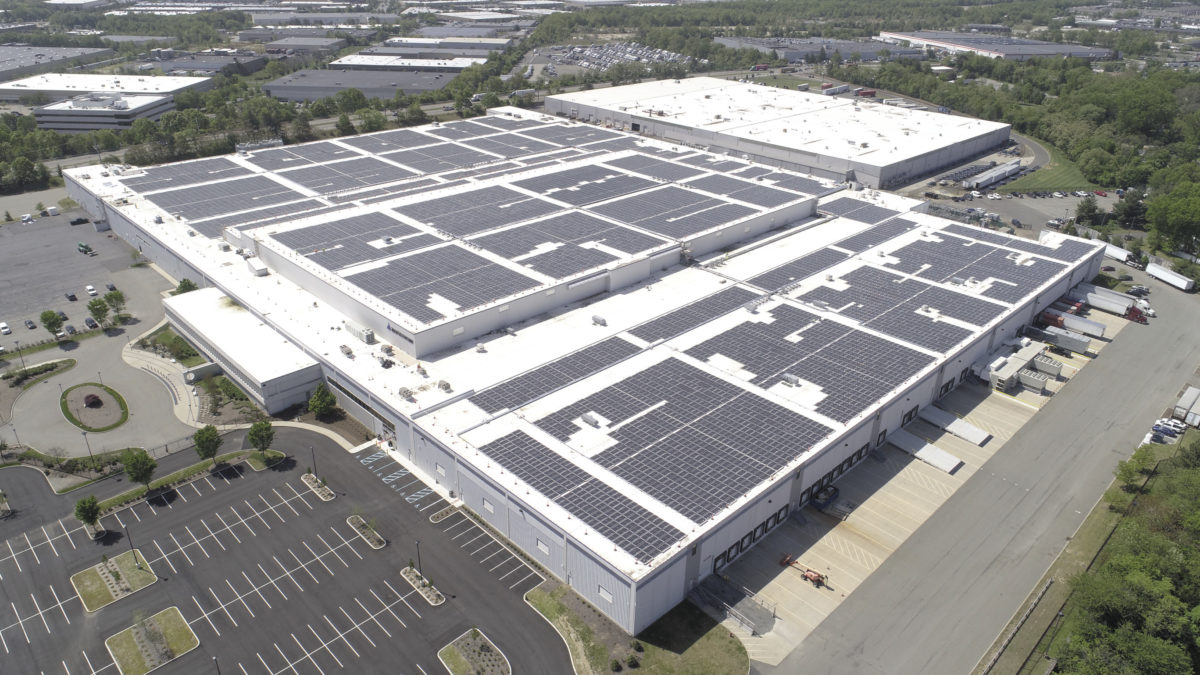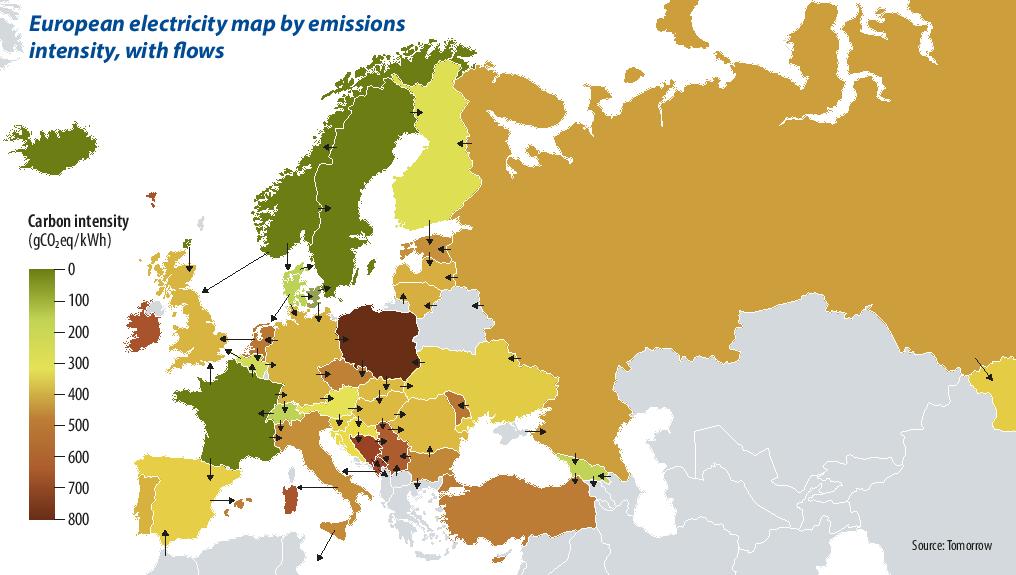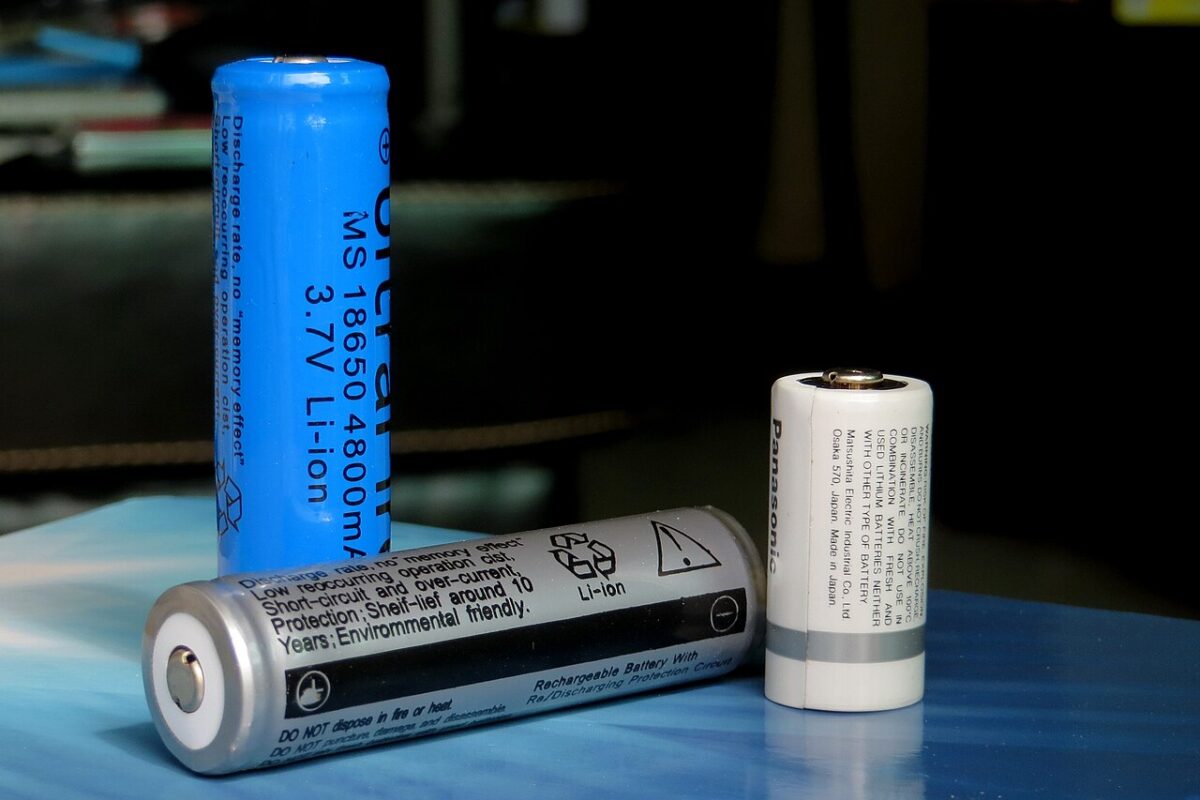From pv magazine 12/2021
Just as black and white film made way for Technicolor and resolution reached high definition, so too will the current annual accounting of energy consumption make way for the better optics on hourly accounting, or what is known as 24/7 hourly matching. Consumers need to know if their electricity is renewable or not, and unfortunately green electrons are not physically Technicolor green.
Not keeping it 100%
In 2017, Google became the first major company to match its annual electricity consumption with 100% renewable energy. Now, the claim of “100% renewables” is not what a layman might expect, as it doesn’t mean that 100% of Google’s consumption came from renewables, but rather that Google purchased enough renewable energy to match its annual consumption in the form of Energy Attribute Certificates (EACs) via power purchase agreements (PPAs). Of course, Google’s facilities were still connected to mixed-energy grids and utilized power produced by fossil fuels.
This is one of the problems with current EACs: A company can claim energy generated during the day at a solar farm in the middle of the night a year later, effectively meaning green energy operates as brown storage. This can be seen as a form of “greenwashing” and means corporate PPAs do less to decarbonize the grid than assumed. Unfortunately, many companies don’t even realize they’re “greenwashing.” As Dan Goldman, co-founder and managing director of U.S. green investment fund Clean Energy Ventures said at TBB Berlin 2021, “there are companies out there that have no idea how to know their emissions.”
To Google’s credit, the tech-giant realized that “100% renewable” should be synonymous with “0% non-renewable,” and the latter remains an impossibility when grid-connected. When Google looked more closely at its consumption, it realized that it had to go much further to reach 24/7. After all, since renewables like solar and wind are variable (and Google’s data centers are not), hour to hour, the company was still relying heavily on coal and gas from the grid. It is now spearheading the concept of 24/7 and has set itself the goal of operating on carbon-free energy (CFE) 24/7 by 2030.
That gap between renewables procurement and actual renewables impact on the grid “is taken by 24/7,” said Olivier Corradi, the creator of electricityMap and the CEO of Tomorrow. He argues that 24/7 means that you “can’t report zero if space and time are not matched. And that is a big step, because right now we’re saying that zero is misrepresentative because we don’t have enough granularity.”
Why go 24/7?
Obviously, 24/7 refers to a temporal shift from annual to hourly energy accounting, but 24/7 calls for spatial accounting, too. This two-pronged focus is key to 24/7’s ability to drive grid decarbonization. Not only should renewable electricity be consumed in the same hour it was procured (unless it comes from storage), but it should also be procured via the same network.
“As the percentage (of renewables) increases, it will continue to become more and more important that we’re aware of where and when renewable power is placed onto the grid in order to maximize impact,” Chris Pennington, the director of energy and sustainability for U.S. data management company Iron Mountain, told pv magazine.
And 24/7 is gaining traction. As Hannah Hunt, impact director for Re-Source Platform put it, “both clean energy buyers and sellers are showing increased interest in exploring 24/7. RE-Source and Eurelectric have a joint 24/7 Task Force that includes more than 60 large energy buyers (including Google, IKEA, Microsoft, Telefonica), sellers, grid operators, and technology providers. Even for companies that are not actively pursuing 24/7, we’re seeing interest to discuss the potential benefits and solutions.”
Similarly, Google’s data center energy strategic negotiator, Amanda Peterson Corio, told pv magazine that the challenge of climate change means “we are already seeing growing momentum behind 24/7.” As examples, Corio pointed to U.S. President Joe Biden’s “commitment 24/7 CFE for federal buildings in its infrastructure plan,” and the UN’s Sustainable Energy for All ‘24/7 Carbon-free Energy Compact’.
Of course, the temporal-spatial aspect of 24/7 should drive the uptake of energy storage and improved grid infrastructure (particularly interconnectors) as well. It is a method of accounting that incentivizes the right behaviors. And 24/7 “will ultimately reinforce the value and impact of solar+storage solutions,” said Pennington.
Timestamping output
Timestamping of electricity production is mounting as an important enabler of 24/7 renewables. That is at least according to the EnergyTag Initiative pushing to put hourly temporal information on EACs, so that 24/7 is possible through Granular Certificates (GCs).
According to EnergyTag’s founder, Toby Ferenczi, timestamping is a way to verify hourly procurement of CFE reliably. “With GCs, CFE is priced according to its real-world availability, cheaply when it is in over supply, and more expensive when it isn’t,” he said.
The emergence of inspectable ledger technologies like blockchain, among others, means that granular traceability is within reach. EnergyTag is looking to provide a framework to which software companies can adhere, with guidelines being designed to “protect against double counting, double issuance and other issues important for making granular certificates a robust instrument,” said Ferenczi.
However, Corradi pointed out that there are other systems to make traceability trustworthy. One example is “flow-tracing,” which tells you where electricity comes from by country of origin and could be applied to EACs to calculate how many GCs can be bought and sold between countries. Another option is to “publish everything as open data.” The necessary factor is that everybody calculates their data using the same methodology.
“Trust for me comes down to being able to be transparent about what you’re doing,” said Corradi. “Which emissions factors are you actually using? How are you treating the imports and the exports on the grids? Are you able to have certificates go from one grid to the other? What are the rules that enable these things? How is storage considered?” These are the questions currently being discussed in the EnergyTag Initiative, and Corradi said the decisions need to be transparent, and “not hidden in some complex 200-page white paper.”
Google’s Corio believes the “24/7 carbon-free approach reflects an unparalleled level of transparency. It enables us to show hour-by-hour where we need to develop new clean energy projects, advocate for policy changes, and in some cases, look to new technologies that can help fill in the gaps.” Looking to set a strong example, in June Google released the 2020 CFE percentages of all its data centers and its overall progress toward the 2030 target.
Ultimately, Corradi explained, there are two ways of looking at traceability. The first is to say that it is impossible to know where an electron comes from, and therefore if you buy X amount of renewables, then you can claim to have used it (known as the purchasing power paradigm). The second, to borrow a “smoothie” analogy offered by Corradi, is that you can’t selectively choose different energy from your neighbor on the same grid, in the same way you can’t selectively choose a particular fruit once it has been made into a smoothie. However, said Corradi, “you can pursue procurement that impactfully removes the fruits from the smoothie that you don’t want, i.e. fossil fuels.” The more granular accounting becomes, the more pre-emptively selective we can be and the more renewable the smoothie becomes.
The initiative’s discussions are not caught on anything “too divisive,” said Ferenczi, but are rather busily occupied with hammering out the extensive amount of detail required to cover the bases of such a complex system. Details such as: “how to ensure that the EnergyTag guidelines work with existing traditional certificate schemes? How to manage units less than 1 MWh? How to include storage? How to manage data quality issues?”
“We need to make it very simple and easy for all types of energy consumers, even those without large energy procurement teams or the ability to sign long-term purchasing agreements,” said Ferenczi. “This is value that GCs can bring.” The value that any buyer, whether they’re a small- or medium-sized business or Google, can be sure where their energy is coming from.
Watch this space
Unfortunately, not every member of the EnergyTag Initiative is as keen on spatial accounting as they are on the temporal. But time alone is not enough. Corio said the spatial element is “massively” important to Google’s 24/7 progress. “It is only by analyzing our hourly footprint at this regional level, that we can begin to pinpoint the exact challenges of each grid where we operate to becoming truly carbon-free.”
Fundamentally, what the 24/7 approach demands, continues Corio, is that we “think about the grid on which we operate. We cannot take a ‘one-size-fits-all’ approach if we want to move the needle towards reaching ‘absolute zero’ emissions.” And this needle needs a push because there are regions in the world “where we have so far been unable to purchase renewable energy because of market barriers and regulatory constraints,” and “regions that do not have efficient wind and solar resources deployable at scale.”

Full-time skeptics
Not everyone is pro 24/7. One suggestion is that 24/7 will drive up the cost of renewables and EACs. In theory, as Corradi points out, if you “restrict the liquidity of the certificate, then the price can increase.” But the point is whether 24/7 incentivizes the right behaviors. If renewables and EACs become scarce due to restrictions of time and space, the price may rise, but it should also incentivize energy storage, interconnectors, and other solutions to renewable intermittency.
In addition, 24/7 should incentivize good policy. A company like Google isn’t likely to invest in a country if the grid isn’t up to scratch or the local renewables are not amenable to 24/7 procurement. As Corradi put it, in the end a grid is just a big, shared asset that takes time to decarbonize, and “physically representative targets” send a “strong signal to policymakers, [by saying] ‘I will make my decision on where to place my assets based on how clean of a grid you can provide in the future.’ And I think that is what is really interesting about 24/7.”
Another criticism, touted by some corporates, particularly those with high levels of emissions in hard-to-decarbonize sectors, is that 24/7 is too much to ask. They complain annual targets are already difficult, and that “big tech” is simply “moving the goalposts.”
Of course, the goalposts haven’t moved; we just didn’t realize how far away they were. Annual 100% renewable matching is not the goal, but decarbonization is, in the same way that reaching the cloud line of a mountain isn’t the same as reaching the summit. As Google’s Corio put it, “100% renewable energy matching is an important step on the path to full decarbonization, but in order to prevent the most dangerous impacts of climate change, we must target the ultimate goal of moving to fully carbon-free grids.”
Time to act
There are many ways actors can move to 24/7 CFE. Companies can improve their hourly carbon footprints by load-shifting the most carbon-intensive activities at times when renewables are most available.
On the policy front, Corio calls for “wholesale market expansion and reform. We need more transmission to unlock congestion and deliver CFE to the regions where people live.” Another is to reduce restrictions on EACs, such as the 1 MWh constraint. And one key policy would be the requirement for temporal matching of green hydrogen production. “It would be a disaster if we are allowed to claim hydrogen to be green based on electricity produced on a different grid at the right time,” said Corradi.
There should also be policy discussion about panic buying of EACs during potential early 24/7 scarcity periods, where bigger companies cause others to miss out.
The move to 24/7 feels inevitable. The more granular our view of the electricity system, the more renewables can join, and the more impactful procurement of renewable energy can be for grid decarbonization.
Additionality vs. emissionality
Additionality is one of the more ambiguous buzzwords in the energy transition. In short, additionality puts your renewable energy procurement in a zero-sum game with your carbon footprint. This is to say, additionality refers to the addition of new renewable assets (either to the grid or on-site) that would not have developed in the absence of purchasing power. Therefore, a company purchasing solar panels for the rooftop of its factory is an example of perfect additionality. A corporate PPA would be considered additional if, as a direct result of the agreement to purchase renewables from a future generator, that project is able to go ahead. Of course, there are more and various shades of additionality, but the key consideration is whether it is creating impact.
Emissionality, on the other hand, which gets its name from the portmanteau of “additionality” and “emissions,” focuses on how impactful a renewable energy addition is on emissions reduction based on the grid mix. So, not only is a renewable project judged on whether it is an example of “additionality,” but also the level of its avoided emissions. For instance, Boston University’s PPA with a midwestern U.S. windfarm avoided more emissions than if it had procured those renewables in New England. The project therefore has better emissionality.
Google’s 2030 24/7 CFE goal means that it must pursue renewable energy generation on the grids that it is operating. Considering the tech-giant’s considerable load, this should help to decarbonize those grids.
| Google data center electricity consumption, carbon-free electricity share in 2020 | |||
| Regional Grid | Location of Data Center(s) | 2020 Grid CFE (%) | 2020 Google CFE (%) |
| Energy Market Authority of Singapore |
Singapore | 2% | 4% |
| Taiwan Power Company, Taiwan | Changhua County | 18% | 18% |
| Elia, Belgium | St. Ghislain | 64% | 79% |
| EirGrid, Ireland | Dublin | 42% | 42% |
| Energinet, Denmark | Fredericia | 83% | 90% |
| Fingrid, Finland | Hamina | 83% | 94% |
| Tennet, Netherlands | Eemshaven | 30% | 60% |
| Sistema Interconectado Central, Chile |
Quilicura | 43% | 65% |
| Midcontinent Independent System Operator (MISO), U.S. |
Council Bluffs, IA | 32% | 93% |
| Southwest Power Pool (SPP), U.S. |
Mayes County, OK | 43% | 92% |
| Pennsylvania, Jersey, Maryland Power Pool (PJM), U.S. |
Loudoun County, VA
New Albany, OH |
41% | 63% |
| South Carolina Public Service Authority (Santee Cooper), U.S. | Berkeley County, SC | 27% | 27% |
| Southern Company (SOCO), U.S. | Douglas County, GA | 30% | 42% |
| Tennessee Valley Authority (TVA), U.S. | Jackson County, AL
Montgomery County, TN |
57% | 70% |
| Duke Energy Carolinas (DEC) | Lenoir, NC | 62% | 67% |
| Bonneville Power Administration (BPA), U.S. |
The Dalles, OR | 90% | 90% |
| Electric Reliability Council of Texas (ERCOT), U.S. |
Midlothian, TX | 37% | 37% |
| Nevada Energy (NVE), U.S. | Henderson, NV | 19% | 19% |
This content is protected by copyright and may not be reused. If you want to cooperate with us and would like to reuse some of our content, please contact: editors@pv-magazine.com.






How about a metal framed sky scraper that supports solar panels multi level.
Using less footprint, going straight up, up, up.e
it does not have to be complicated what regulations need for 23/7 (and backup) between inter-continental (interconnected) and synchronized grids for (1-2)/7, (7-15/182 or (15-30)/365) (balancing backup cross state borders) exchange. Ideally there are cost for carbon dioxide effects and fossil fuel electricity and on other scale limits cost for renewable electricity provision and (depending on natural ressources from sun irradiance and therefore wind forces and water flow from higher storage capacities). See amount of input of electricity into a grid, get sharing factor of amount of renewable and weigh input electricity into grid on amount of renewable share (maybe linearly calculated between cost of fossil/nuclear grid feed (including environmental impact cost) and renewable (averaged, including backup storage, interconnection upgrades, fossil backup capacities – if necessary, depending on geographic conditions and/or amount of overprovision through renewable energy installed power).
Give all access to publicly available and descriptive numbers and statistics making cost and prices reliable and socially balanced.
Getting into details …
Ideally there are cost for carbon dioxide effects and fossil fuel electricity and on other scale limits cost for renewable electricity provision and (…) backup upgrades towards reduced CO2/CH4 emission (considering cost efficiency also).